Any time you're dealing with water, you're also secretly dealing with mineral deposits. It's why you have to drain your water heater every six to twelve months. You want to remove any buildup that collects inside. If you're not familiar with draining a gas water heater, let's go over the details.
Draining a gas water heater can seem complicated on the surface. But, it's a simple task. Still, you need to proceed carefully. If you want to drain it, you'll need to:
- Turn off the gas.
- Turn off the water supply.
- Connect a hose to the drain valve.
- Allow air into the system.
- Flush the sediments.
- Refill and reset the heater.
As you can tell, there are a lot of steps to follow. They're relatively simple. However, you want to avoid making mistakes. After all, you're dealing with hot water than can leave you and others with nasty burns. If you'd like a thorough explanation, keep reading ahead.

Draining A Gas Water Heater
Before you start the process, take care of the delicate things. You're dealing with hot water that can leave scalding marks. So, make sure kids don't have a way to access the area.
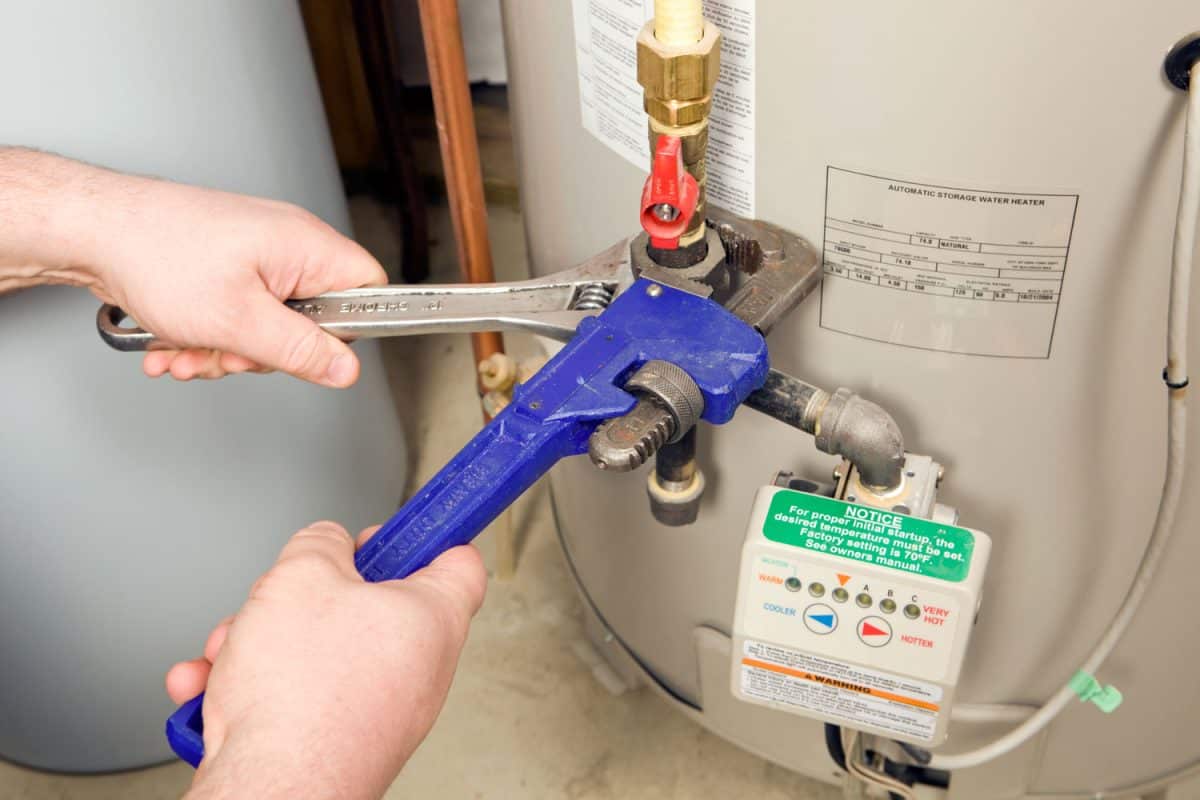
The same goes for pets. This way, you can focus on the task at hand. You can start the process when you're free to work on this task without worry.
It's also crucial to point out that you shouldn't do this if you're unfamiliar with what to do. The guide is not a substitute for a professional. As always, practice safety first.
Turn Off the Gas
The first thing you want to do is turn off the gas. You can go about this in two ways. If you're not comfortable messing around with valves, you can search for the temperature dial.
It's not hard to miss. But, the appearance of the dial will differ from brand to brand. Regardless, the temperature dial can be red or black. It will have the letters A, B, and C on it.
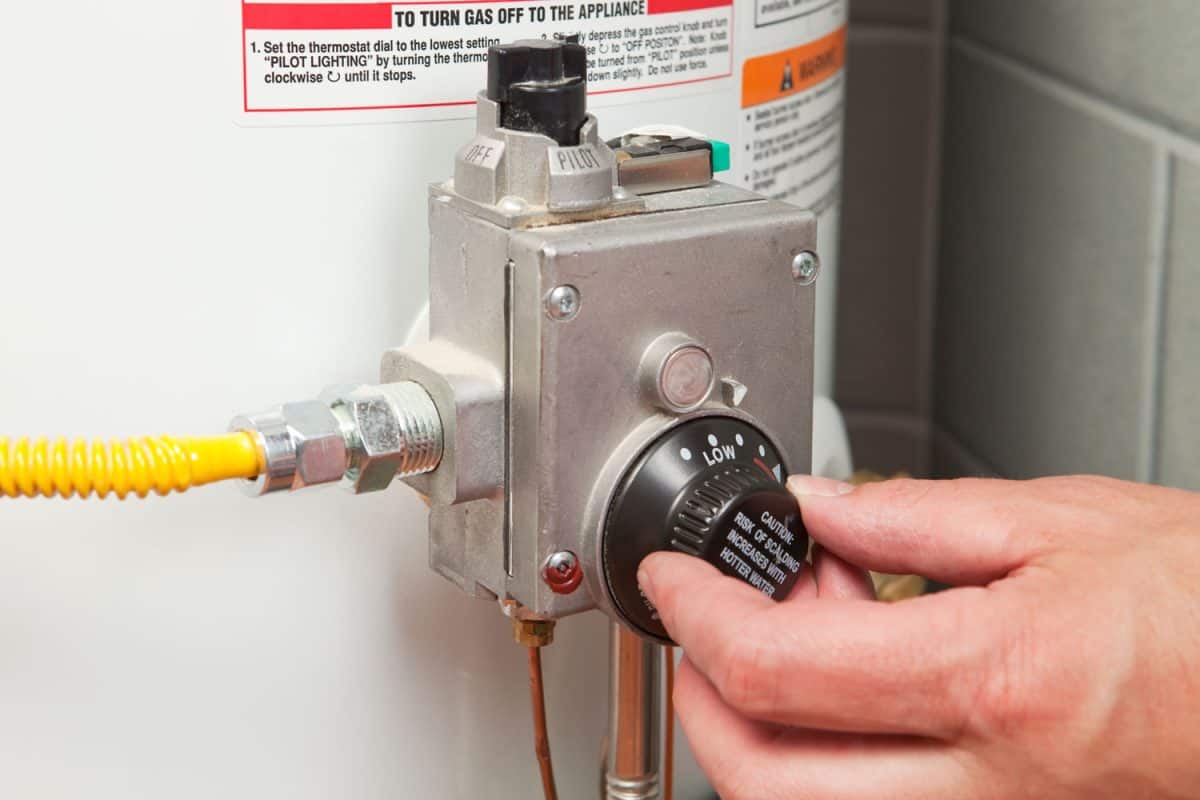
The difference will mainly concern the vacation setting. It won't always be labeled the same. So, yours might say low or pilot instead.
You should set the temperature dial to either the low, pilot, or vacation setting. Avoid using the OFF setting. If you turn the dial to it, you will have to go back and relight the pilot light.
The other option is to go straight for the shut-off valve. It's usually a red valve on the gas line. Turn it clockwise to turn the gas off.
Why You Shouldn't Skip This Step
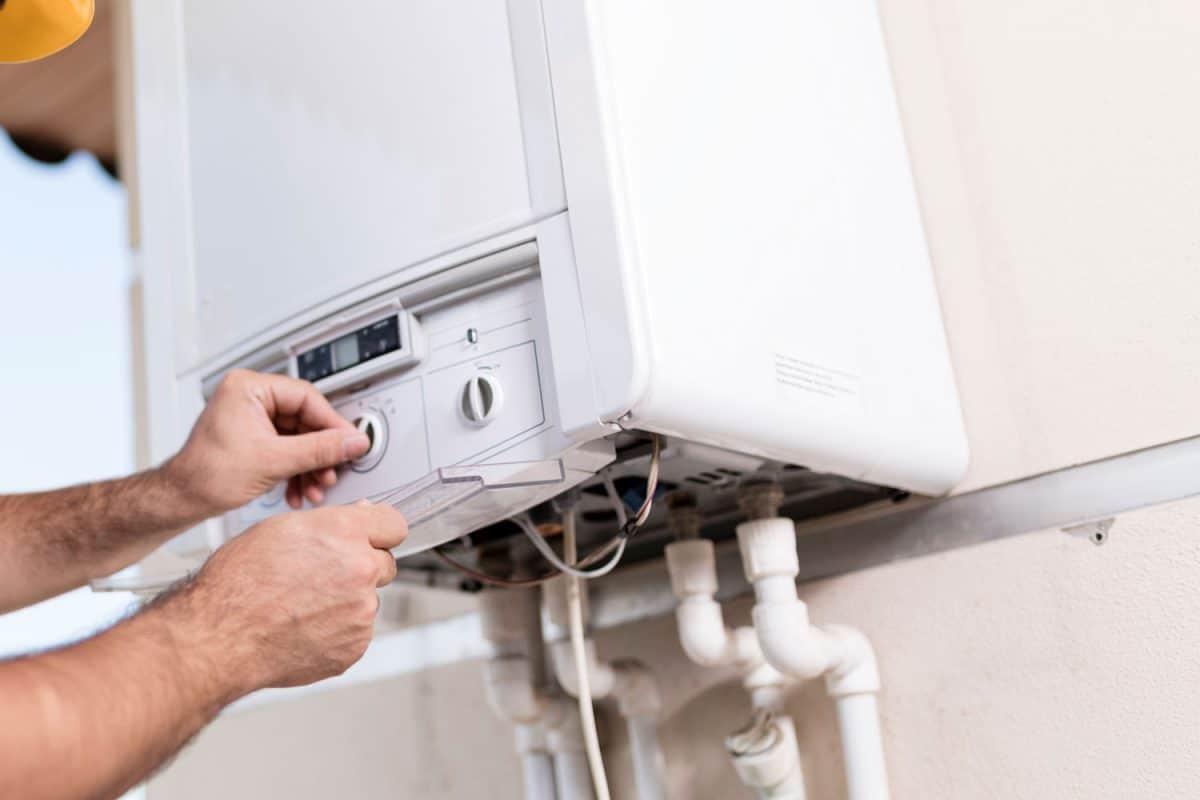
It's crucial that you don't skip this step. In the worst case, there's a high possibility that you'll ruin the water tank. If the burner turns on somehow, it will be heating an empty tank.
That heat is hot enough to melt the metal. So, tell everyone not to use the hot water while you're doing this.
Turn Off the Water Supply
Next, locate the cold water supply. It will usually be at the top of the water heater. You will see a ball valve that can be red or black.
Turn it clockwise to shut off the water supply.
Connect The Hose to the Drain Valve
This step depends on the design of your water heater. In most cases, you will find a drain spigot or a drain valve at the bottom of the water tank. Make sure the connection is secure.
Put the other end of the hose into a bucket. This way, you can check the number of sediments you're dealing with. Otherwise, put it in an area that you don't mind getting wet.
Allow Air Into the System
It's time to allow air into the system. Otherwise, if you try to open the valve now, water won't flow out. At this point, it's a similar situation to holding your finger over the end of a straw.
No water supply is coming in. Thus, you're going to have to introduce air to let it flow out. You can do this in several ways. Opening a hot water faucet anywhere in the house can do the job.
Next to the drain spigot or valve will be something that fits a flathead screwdriver. Use a flathead and turn it a quarter of the way counterclockwise. At this point, you should hear a noise.
Using the Pressure Release Valve
However, it might not work in some cases. You'll know it's not working if the water tank produces no noise. If that's the case, you will need to use the pressure release valve.
There will be a silver arm that's pointing downward. Bend it straight up to open it. You should immediately hear air getting into the tank. Water will also start flowing.
Be careful when using the pressure release valve. It's a safety feature. So, make sure to seat it correctly afterward. Lift the lever down. Then give it a few taps with a hard tool to set it.
Flush the Sediments
At this point, you will have to wait until the tank drains entirely. As a reminder, don't let anyone near the draining water. Don't set it near plants or anything you don't want to ruin. It's scalding hot water.
Let it run its course. Once it's empty, you will need to agitate the remaining sediments that could still be in the tank. Open the cold water inlet for about 15 seconds. Then, let it rest and drain out.
Repeat the process a few more times to clean out the tank. Once the water from the tank becomes clear, it's time to close everything up.
Refill and Reset the Heater
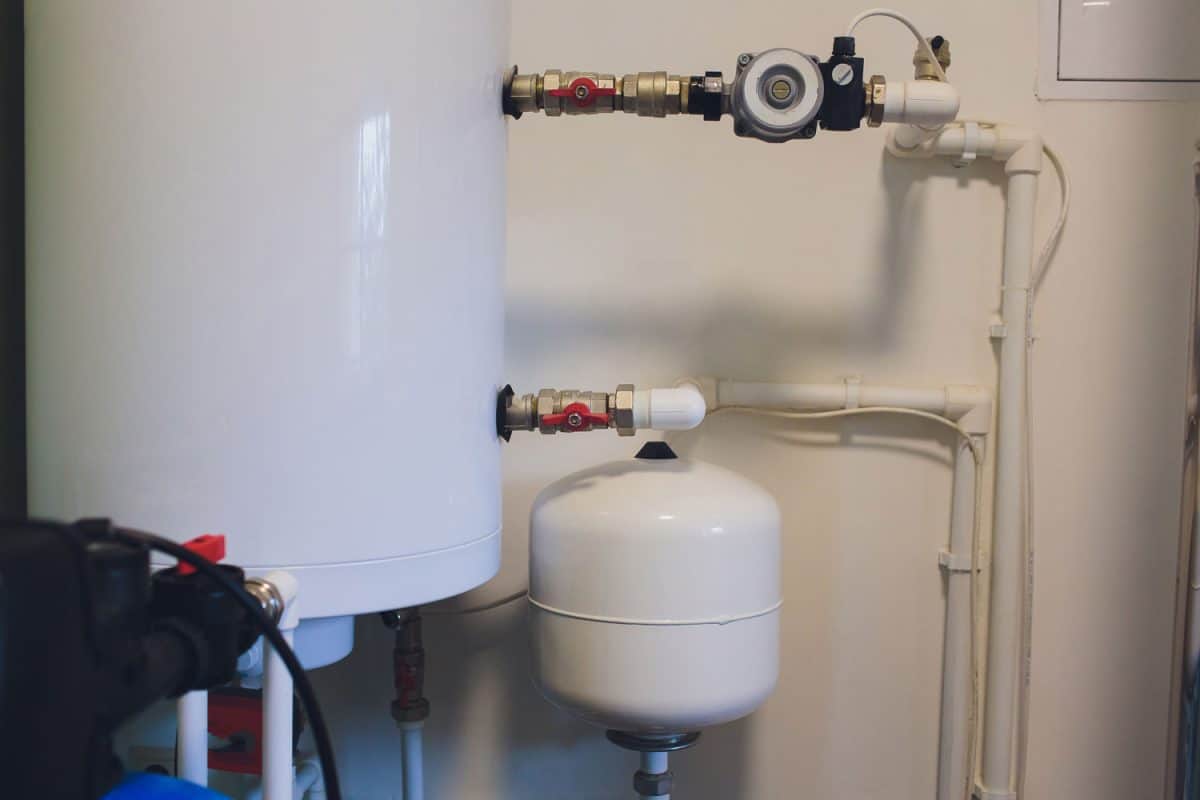
For the final part of the process, you can do two things. You can refill the tank with cold water and repeat the process. This way, you can agitate the whole tank. Therefore, you're draining out all the sediment possible.
If this sounds good, you'll need to close the drain and pressure release valve. Then, open up the valve on the top of the heater to fill the tank. Once it's full, open the valve at the bottom and open the pressure release valve.
After it finishes draining a second time, you can close everything but the pressure release valve. You may also skip the second draining process and refill the tank. In any case, close the drain line.
Refilling the Tank
Then, remove the hose. Open the cold water inlet again. You'll need to be attentive for this portion of the process.
The pressure release valve is still open to let the air out of the tank. But, as the tank fills with water, it will reach that valve. Thus, you might accidentally drain water onto your floors.
Close the release valve as the tank gets closer to being full. Set the temperature dial to the previous setting. Finally, open the hot water valve on any faucet in your home to let the remaining air in the system out.
Once the water flows normally, shut the faucet off.
Here's a YouTube video if you need a visual example:
Here's another video demonstrating the process with another water heater model:
Is It Too Late To Drain My Water Heater?
One concern that comes to mind regards timing. What if it's your first time thinking about draining the water heater? After a few years, there's probably a ton of sediment built up in the tank.
Some plumbers would recommend not draining the tank at that point. The reasoning behind this recommendation is that it would do more harm than good. Others suggest that you'll run into various problems at this point.
Maybe the valves won't open. In addition, the drain will clog because of all the sediment that's flushing out. Lastly, it might not even close properly.
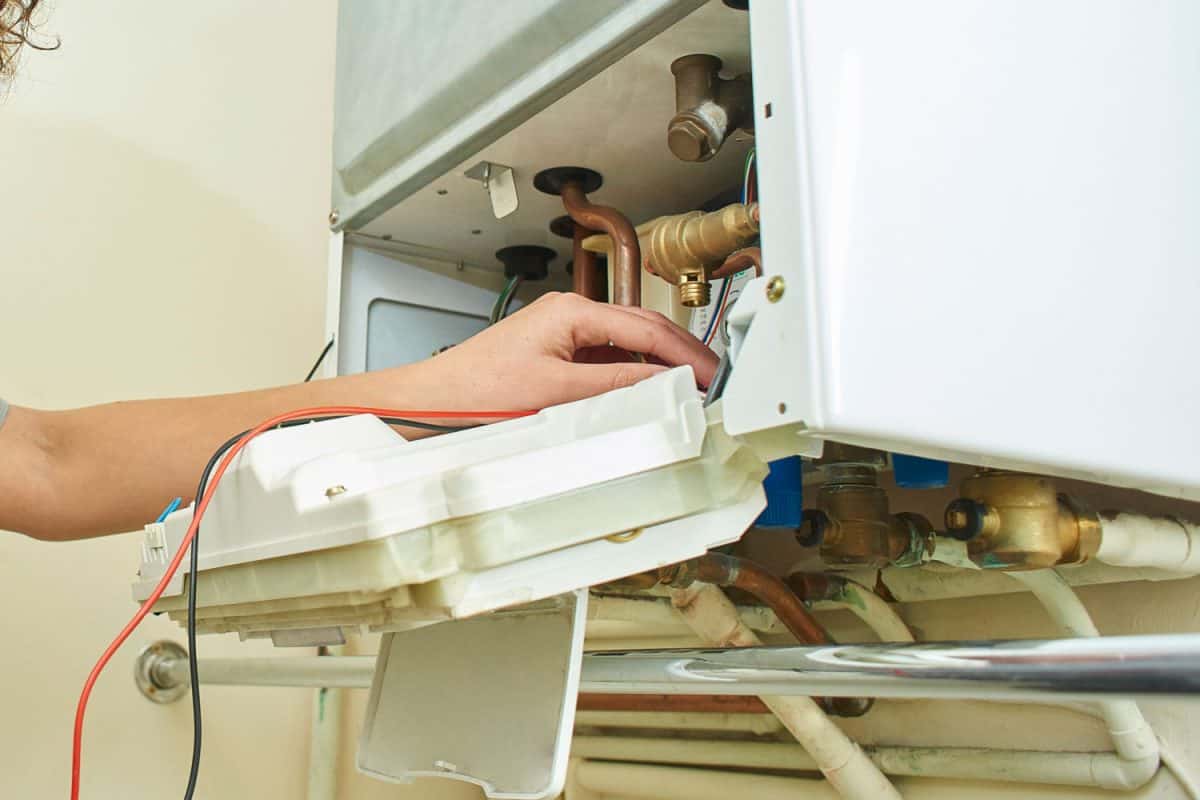
So, the answer to the question would have to be it depends. If a long time has passed, maybe about eight years, it is probably too late to flush the system without running into problems.
If you've waited two to three years before you've thought about draining the system, it should be fine to drain it. It's still early enough to drain the heater without too many problems. Nevertheless, it's your call.
You can drain it or let it run its course. Once it's time to replace the water heater, make sure to drain the new one annually.
Why Is It Taking So Long To Drain My Water Heater?
If the water heater is taking too long to drain, there are various reasons why that might be the case. However, the most common cause is a clogged drain valve. An excess of sediment is probably blocking the drain.
When this happens, you will need to unclog it by waiting until the sediment breaks down under pressure, using a coat hanger to agitate the buildup, or performing a back-flush.
How Long Does It Take To Drain a 40 Gallon Water Heater?
Several factors influence how fast you can drain a water heater. So, it might take anywhere around 20-60 minutes to drain a 40-gallon water heater. Any longer than that would indicate an issue that you need to address.
In Closing
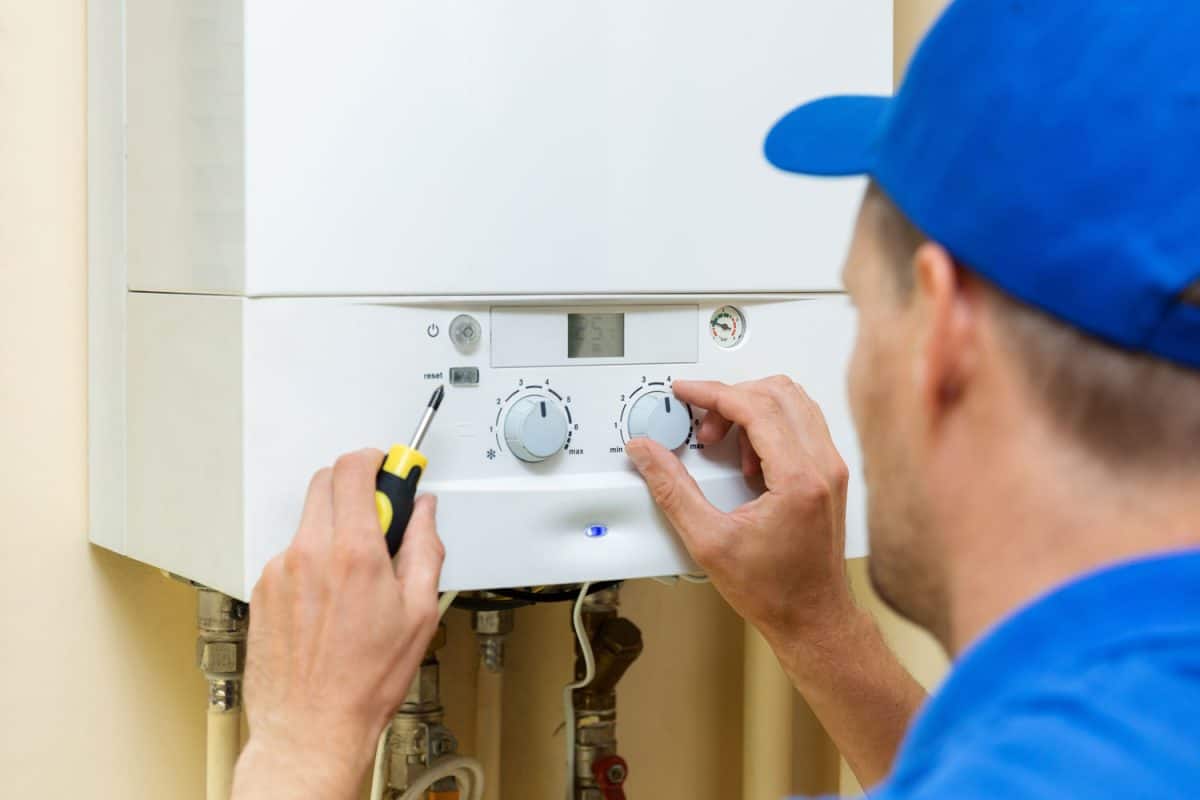
It isn't too complicated to drain a gas water heater. Nevertheless, it's always a good idea to research the process beforehand. We hope you found the information above helpful!
Before you go, do you have other plumbing concerns? Are you considering replacing the pipes? To learn more, check out:
How Long Do Copper Pipes Last And When To Replace Them?
Do you need a new drain pipe for the bathroom sink? If you'd like more information on this topic, check out:
